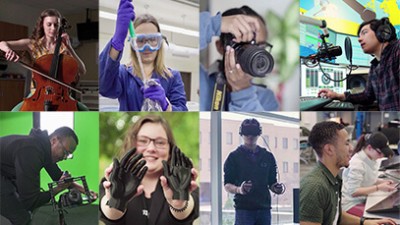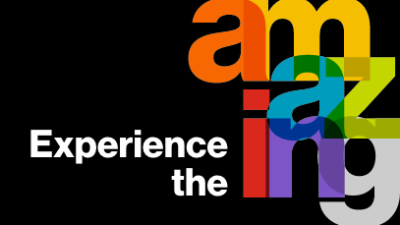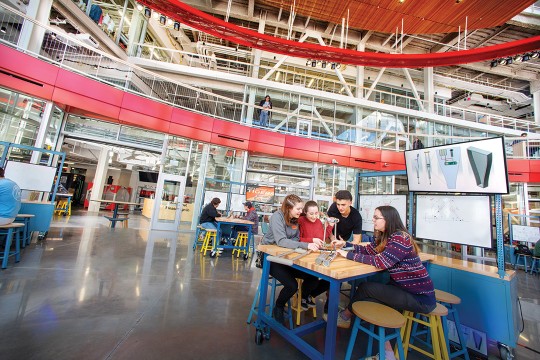
Michael Buffalin IV
SHED Makerspace Director
Michael Buffalin IV
SHED Makerspace Director
Currently Teaching
In the News
-
May 1, 2024
![four students sit at a table testing a small product in one of the SHEDs makerspaces.]()
What’s being made in the SHED
Making at RIT has hit a new level now that several makerspaces in the Student Hall for Exploration and Development (SHED) have opened to provide students access to equipment and support for classwork, club advancement, and personal projects.
-
April 22, 2024
![The SHED is shown in the background as students mill about the outside area and walk past it.]()
The SHED marks its Imagine RIT debut April 27
The SHED, touted as the new heartbeat of campus, makes its Imagine RIT debut this year. This multi-use facility embodies RIT's blend of technology, the arts, and design, offering a vibrant hub for creativity, interdisciplinary learning, and innovative performances year-round.
-
February 2, 2024
![college student runs a vintage printing press, making a poster that says thinkers, makers, printers in gold ink.]()
Maker community fills the new SHED
RIT’s makerspace capacity has grown exponentially from a crowded room on the fourth floor in an engineering building to three floors in the centrally located SHED. New last fall, the SHED complex showcases different kinds of making and learning under one roof—in workshops, performing arts spaces, and extra-large classrooms designed for active learning.











